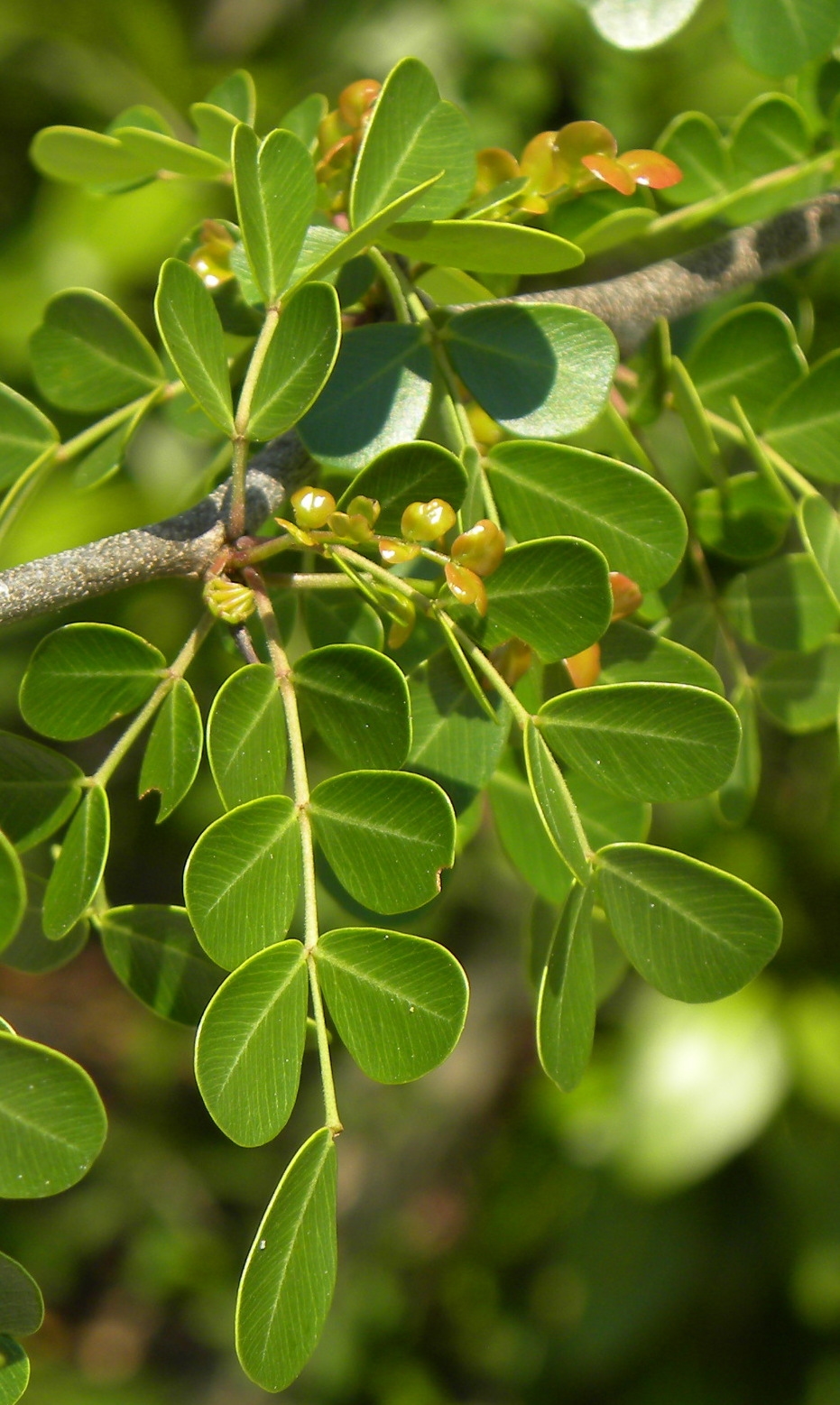Habit: Haematoxylum campechianum grows as a tree/shrub to 10 meters in height and 50 centimeters in diameter, branches often spiny. The even pinnately compound leaves are arranged alternately, to 7 centimeters in length, with the 2-4 leaflets each to 2 centimeters in length, ovate to oblong to obovate, with a rounded/retuse leaf apex and an entire margin.
The complete, perfect, slightly zygomorphic, perfect, complete flowers are arranged in dense axillary racemes. The calyx has 5 reddish purple, reflexed sepals. The corolla has 5 yellow petals. There are 10 tomentose stamens. The perianth and the androecium are fused at their base forming a shallow hypanthium. The ovary is superior with a single locule. The fruit is a brown 2-3 seeded legume at maturity.
Habitat: Haematoxylum campechianum in Human Altered environments such as old fields, homesteads, roadsides often in areas that are ephemeral fresh water wetlands.
Distribution: Haematoxylum campechianum is NOT native to the Lucayan Archipelago. It is native to Central America but now occurs throughout the Bahamian Archipelago, the Caribbean, and Florida as a Non-Native Invasive.
Medicinal/Cultural/Economic usage: Haematoxylum campechianum is used medicinally in the Lucayan Archipelago to treat circulatory issues and in strengthening teas.
It has been traditionally used to make dyes for textiles and microscopy. A blue dye can be extracted from the heart wood.


